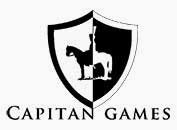Pitschenberg: the forces
The Allied OOB has been taken from Plotho (Der Krieg in Deutschland und Frankreich in den jahren 1813 und 1814 Vol 2) and the article in Militair Bochenblach (No. 778 (1831) 4501), that provided the data for the Prussian advance guard composition. An educated guess was made for the composition of the accompanying Russian units and for the Prussian reinforcements.
The French OOB has been made from information collated from the Nafziger's Orders of Battle Collection. and the two Fabry's accounts of the campaign ("Etude sur les opérations du maréchal Macdonald, du 22 août au 4 septembre 1813, la Katzbach“ and"Journal des opérations des IIIe et Ve corps en 1813”).
Some units were deleted from the OOB's, to avoid a too large Scenario
 |
| Le Maréchal Macdonald |
Army Morale: 51; Morale break point: 17
16 Battalions/7 Regiments/5 Batteries (12,900 men)
C-i-C Macdonald (-/¶)
III Corps Gerard (-/*)
35th Division Henin (+1/*)
1st Brigade Dumouton (-/¶)
3/6e Légère Regiment R/A/SK1
4/6e Légère Regiment R/A/SK1
7/6e Légère Regiment R/A/SK1
1/112e Ligne Regiment R/A/SK1
2/112e Ligne Regiment R/A/SK1
3/112e Ligne Regiment R/A/SK1
2nd Brigade Zucchi (-/-)
3/2 Legere Italian R R/A/SK1
4/2 Legere Italian R R/A/SK1
1/5th Italian Ligne R R/A/SK1
2/5th Italian Ligne R R/A/SK1
3/5th Italian Ligne R R/A/SK1
6/1e Foot Artillery Foot 3Guns/M/1Hw
3/1e Italian Horse Artillery Horse 2Guns/M/1Hw
28th Light Cavalry Brigade
Italian Chasseurs a Cehval R/A/Pu
Neapolitan Chasseur a Cheval S/E/Pu
Neapolitan Horse Artillery Horse 2Guns/M/1Hw
Reinforcements
16st Division Maison (+1/*) (From the Lauriston's V Corps)
1st Brigade Penne (+1/-)
1/151e Ligne Regiment R/A/SK1
2/151e Ligne Regiment R/A/SK1
1/152e Ligne Regiment R/A/SK1
2/152e Ligne Regiment R/A/SK1
3/152e Ligne Regiment R/A/SK1
1/1e Foot Artillery Foot 3Guns/M/1Hw
2nd Light Cavalry Division Roussel d'Hurbal (+1/-) (From the LSebastiani's II Cavalry Corps)
7th Light Cavalry Brigade Gerard (-1/-)
4th Chevauléger-lancier Regiment R/E/Pu/Ln
5th Hussar Regiment R/E/Pu
9th Hussar Regiment R/E/Pu
8th Light Cavalry Brigade Dommanget (+1/-)
2nd Chevauléger-lancier Regiment R/E/Pu/Ln
11th Chasseur à Cheval Regiment R/A/Pu
8/6e Horse Artillery (3-6pdrs & 1-24pdr how) Horse 2Guns/M/1Hw
 |
| General Nikolai Vasilyevich Vasilchikov |
Army Morale: 44; Morale break point: 15
14 Battalions/6 Regiments/3 batteries/2 Cossacks
C-i-C Vassilchikov (+1/¶)
Prussian Adv. Guard von Katzeler (+1/-)
Brandenburg Uhlan Regiment R/E/Pu/Ln
Hussars (Brandenburg+Leib) V/E/Pu
W. Prussian Dragoon R R/E/Pu
Fus/1/East Prrusian IR R/E/SK2
1/2 Guard/East Prus. Jaegers V/E(I)/SK3 (Can act as Regular (Experienced) or Irregular)
Horse Battery #2 Horse 3Guns/M/1Hw
Prussian Detachment Hiller (-/-)
Grenadiers East Prussia V/E/SK2
Leib Grenadiers V/E/SK2
1/14th Silesian Landwehr U/A/SK1
2/14th Silesian Landwehr U/A/SK1
Fus/12th Reserve IR R/E/SK2
10th Silesian LWr Cavalry S/A
6 pr Foot Battery #24 Foot 3Guns/M/1Hw
2nd Russian Cavalry Division Lanskoi (-/¶)
1st Brigade Yurkovski (-1/-)
Marioupol Hussar R V/E/Pu
Alexandria Hussar R V/E/Pu
Cossacks Karpov II (-1/-)
Karpov #2 Cossack R S/I/Pu
Loukoffkin Cossack R S/I/Pu
Reinforcements
8th Prussian Brigade von Hünerbein (-/-)
1/Brandenburg IR R/E/SK2
2/Brandenburg IR R/E/SK2
Fus/Barndenburg IR R/E/SK2
1/12th Reserve IR R/E/SK2
2/12th Reserve IR R/E/SK2
6pdr Battery #15 Foot 3Guns/M/1Hw
15th Russian Division Rudsevich (-/¶)
3rd Brigade Tichanovsky (+1/*)
1/12th Jager R R/E/SK2
2/12th Jager R R/E/SK2
Next, the Scenario rules!












































